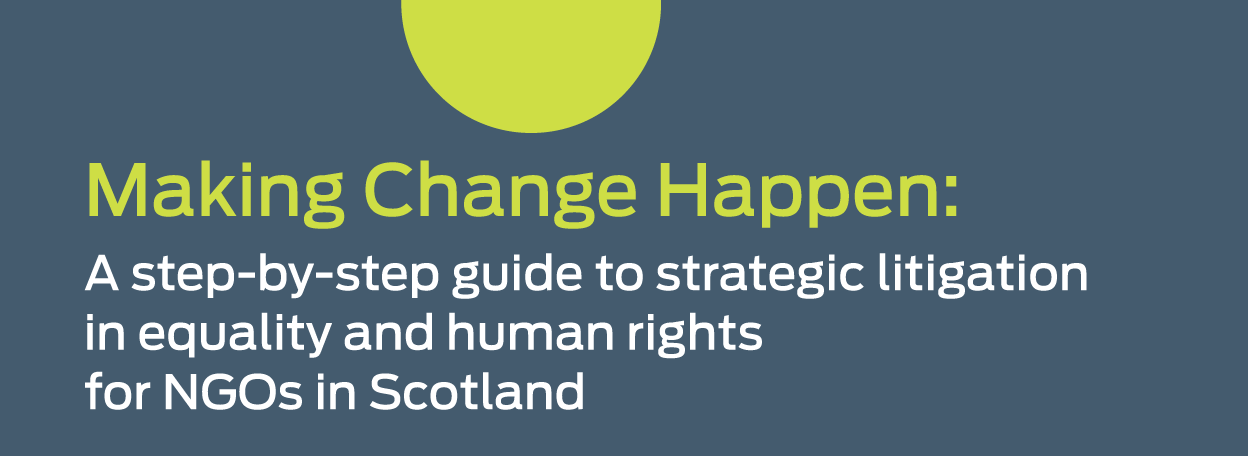If an individual is unable to access the equality or human rights that they have in law in Scotland, they can ultimately take the matter to court or tribunal to enforce these rights. Not all aspects of equality and human rights are enforceable by UK courts, but many are.
This guide uses the term ‘strategic litigation’ to describe where an organisation deliberately takes, or supports an individual to take, legal action on equality and human rights in order to bring about bigger, strategic change on a particular issue.
The issue may be strategic because it:
Strategic litigation is sometimes called taking a test case or impact litigation.
This guide uses the term ‘strategic litigation’ to describe where an organisation deliberately takes, or supports an individual to take, legal action on equality and human rights in order to bring about bigger, strategic change on a particular issue.
The issue may be strategic because it:
- affects many people,
- significantly affects a small number of people,
- has big implications for society’s understanding, or
- impacts the development of future law, policy or practice
Strategic litigation is sometimes called taking a test case or impact litigation.
Many organisations advocate for change using a whole variety of methods. For example, through using the media, meetings with policy makers, consultation responses, reports, research or events.
Litigation is another very effective tool that organisations can use to achieve their strategic campaigning objectives. Indeed, strategic litigation can be successful in bringing policy and significant changes where all other methods have failed.
Organisations can use strategic litigation where they want to:
Litigation is another very effective tool that organisations can use to achieve their strategic campaigning objectives. Indeed, strategic litigation can be successful in bringing policy and significant changes where all other methods have failed.
Organisations can use strategic litigation where they want to:
- Enforce the law
- Clarify the meaning of the law
- Challenge the law
- Draw attention and debate to a particular problem in law or its implementation
Using the law can lead to policy and material victories in the courts that might have been impossible to achieve in any other way.’
Dr Lisa Vanhala, UCL
About this website
The 'About' pages tell you who this guide is for and includes our accessibility statement.
The 'Step-by-Step' Guide pages detail 8 steps for consideration when thinking about strategic litigation.
The 'Methods' pages give an overview of some of the different options available in strategic litigation. Each method includes some relevant case studies.
The 'Case Studies' pages collect together the examples of how different methods of strategic litigation have been used.
The 'Resources' section includes information about the role of the Equality and Human Rights Commission; a short summary of Equality and Human Rights Law in the UK; a glossary of terms used; and a list of useful contacts.

